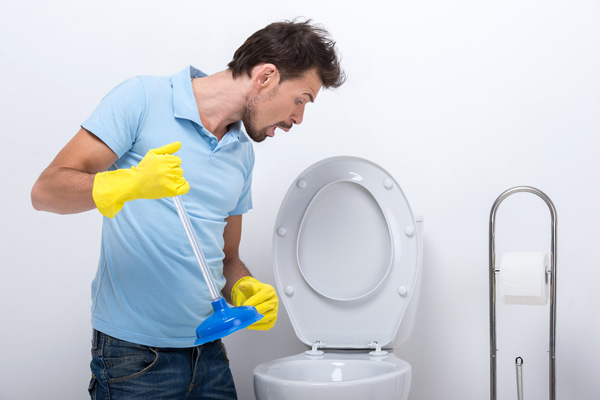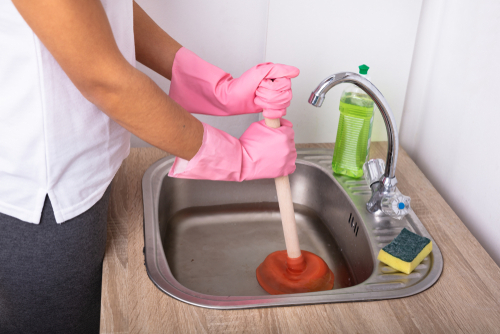How to Successfully Utilize Plunger and Drain Cleaner: Pro Guidance
How to Successfully Utilize Plunger and Drain Cleaner: Pro Guidance
Blog Article
The article directly below on the subject of How to Use a Plunger to Unclog a Toilet or Drain is extremely informative. Don't overlook it.

Intro
Correct maintenance of house drains is crucial for avoiding obstructions and ensuring smooth water flow. One of the key tools in every home owner's toolkit is the bettor, along with numerous drainpipe cleaners created to take on persistent obstructions efficiently. This write-up checks out how to make use of plungers and drain cleansers successfully to keep your drains pipes streaming freely.
Area 1: Comprehending Plungers
Sorts of Plungers
There are numerous kinds of plungers available, each designed for various kinds of drains and obstructs. The most common types include mug plungers, flange bettors, and accordion plungers.
Exactly How Plungers Work
Bettors work on the concept of developing pressure and suction to remove blockages. When appropriately used over a drainpipe, they produce a vacuum cleaner that can pull out debris or break up obstructions.
Picking the Right Bettor
Selecting the right bettor depends on the sort of drainpipe and the nature of the obstruction. Mug plungers are perfect for sinks and bathtubs, while flange bettors are much better suited for commodes because of their design.
Usual Blunders with Plungers
Staying clear of these blunders makes certain efficient plunging: inappropriate seal around the drainpipe, not enough force, and unclear surrounding particles.
Section 2: Utilizing Plungers Properly
Prep work
Prior to diving, guarantee the bettor covers the drain totally and creates a tight seal. Clear any noticeable debris around the drainpipe opening.
Strategy
Start with mild plunging activities to construct suction. Boost pressure progressively, utilizing a steady rhythm. Repeat as needed up until the drainpipe gets rid of.
Troubleshooting Tips
If plunging doesn't work, try readjusting the seal, applying petroleum jelly for a much better seal, or making use of a different type of bettor.
Section 3: Comprehending Drainpipe Cleaners
Kinds Of Drain Cleaners
Drain pipes cleaners can be chemical or chemical. Chemical cleaners utilize solid chemicals to dissolve clogs, while chemical cleaners utilize natural enzymes to break down raw material.
Exactly How Drainpipe Cleansers Work
Chemical cleansers react with clogs to liquify them, while enzymatic cleaners break down organic products like hair and oil without damaging pipes.
Safety Factors to consider
Constantly use gloves and eye defense when using chemical drain cleansers. Make certain ample ventilation and adhere to maker directions meticulously.
Eco-Friendly Alternatives
Think about using vinegar and cooking soft drink or enzyme-based cleansers for green alternatives that are safer for pipelines and the setting.
Area 4: Making Use Of Drainpipe Cleansers Efficiently
Application Strategies
Pour chemical cleaners directly into the drainpipe opening. Permit them to work for the advised time prior to flushing with hot water. Chemical cleaners must sit overnight.
Preventative measures
Stay clear of blending different types of cleaners, as this can create hazardous fumes. Never ever make use of chemical cleaners together with a bettor, as spilling can take place.
Taking Care Of Stubborn Obstructions
For consistent clogs, think about using a plumbing serpent or calling a specialist plumbing to avoid damage to pipes.
Conclusion
Finally, comprehending exactly how to make use of plungers and drain cleaners effectively is important for keeping healthy plumbing systems. By picking the right devices and methods, home owners can tackle small blockages and protect against significant plumbing problems down the line.
How To Properly Use A Plumbing Snake To Clear Drains
When any drain clogs in our home arise, we tend to gravitate toward the plunger and little else. In cases where the plunger and its vacuum-created pressure are not able to clear clogs, many immediately move to harmful chemicals or simply call their plumber to fix the issue.
we’re happy to help with all drain cleaning needs and concerns. This includes informing you on a few other home remedies you may have at your disposal for minor to moderate clogs, one of which is the use of a plumbing snake. Many people have never used one of these before – let’s go over the steps to take when your drain clogs and you have a plumbing snake available.
Attempt Plunger Use
The first step here, as we noted above, should indeed be to grab your plunger when you notice a drain clog and attempt to resolve it this way. If you’re unsure how to use a particular type of plunger, our plumbers can answer any questions you have. If this doesn’t do the trick, however, you move on to the snake.
Locate And Prepare Snake
A plumbing snake is a metal or plastic device that’s generally about a quarter of an inch thick. It’s design with significant extensions, meant to reach down into your clogged drain and push the clog out. Snakes also contain drain augers that will latch onto and push stubborn blockages.
If your plunger doesn’t clear a clog, locate your snake and bring it to the drain in question. We also recommend keeping a bucket nearby to collect the clog once you pull it out, plus we’d advise wearing goggles and possibly protective gloves.
Feed Snake
Once you’re ready to go, feed the snake slowly down the drain, using the crank device it comes with to keep it moving until it finds the clog. Once this happens, much of the clog will be latched onto the coil so you can pull it out, while the rest will simply break up and flow downward.
Detach Debris
Remove the snake slowly from the drain, and once you’ve done so, pick off any debris that’s stuck to the coil. This is another area where wearing gloves is a must.
Flush Drain
Finally, take a few minutes to ensure the snake has done its job correctly. If you’ve been using it on a toilet, flush the toilet a couple times and make sure everything flows well. If you’ve used it on a different drain, flush it with some room temperature water.
https://www.mybuddytheplumber.com/blog/how-to-properly-use-a-plumbing-snake-to-clear-drains/

Application Strategies
Pour chemical cleaners directly into the drainpipe opening. Permit them to work for the advised time prior to flushing with hot water. Chemical cleaners must sit overnight.
Preventative measures
Stay clear of blending different types of cleaners, as this can create hazardous fumes. Never ever make use of chemical cleaners together with a bettor, as spilling can take place.
Taking Care Of Stubborn Obstructions
For consistent clogs, think about using a plumbing serpent or calling a specialist plumbing to avoid damage to pipes.
Conclusion
Finally, comprehending exactly how to make use of plungers and drain cleaners effectively is important for keeping healthy plumbing systems. By picking the right devices and methods, home owners can tackle small blockages and protect against significant plumbing problems down the line.
How To Properly Use A Plumbing Snake To Clear Drains
When any drain clogs in our home arise, we tend to gravitate toward the plunger and little else. In cases where the plunger and its vacuum-created pressure are not able to clear clogs, many immediately move to harmful chemicals or simply call their plumber to fix the issue.
we’re happy to help with all drain cleaning needs and concerns. This includes informing you on a few other home remedies you may have at your disposal for minor to moderate clogs, one of which is the use of a plumbing snake. Many people have never used one of these before – let’s go over the steps to take when your drain clogs and you have a plumbing snake available.
Attempt Plunger Use
The first step here, as we noted above, should indeed be to grab your plunger when you notice a drain clog and attempt to resolve it this way. If you’re unsure how to use a particular type of plunger, our plumbers can answer any questions you have. If this doesn’t do the trick, however, you move on to the snake.
Locate And Prepare Snake
A plumbing snake is a metal or plastic device that’s generally about a quarter of an inch thick. It’s design with significant extensions, meant to reach down into your clogged drain and push the clog out. Snakes also contain drain augers that will latch onto and push stubborn blockages.
If your plunger doesn’t clear a clog, locate your snake and bring it to the drain in question. We also recommend keeping a bucket nearby to collect the clog once you pull it out, plus we’d advise wearing goggles and possibly protective gloves.
Feed Snake
Once you’re ready to go, feed the snake slowly down the drain, using the crank device it comes with to keep it moving until it finds the clog. Once this happens, much of the clog will be latched onto the coil so you can pull it out, while the rest will simply break up and flow downward.
Detach Debris
Remove the snake slowly from the drain, and once you’ve done so, pick off any debris that’s stuck to the coil. This is another area where wearing gloves is a must.
Flush Drain
Finally, take a few minutes to ensure the snake has done its job correctly. If you’ve been using it on a toilet, flush the toilet a couple times and make sure everything flows well. If you’ve used it on a different drain, flush it with some room temperature water.
https://www.mybuddytheplumber.com/blog/how-to-properly-use-a-plumbing-snake-to-clear-drains/

I was shown that write-up on A Guide to Plungers (and How to Use Them) through a buddy on a different blog. I beg you take the opportunity to distribute this write-up if you enjoyed reading it. Thanks for taking the time to read it.
Call Today Report this page